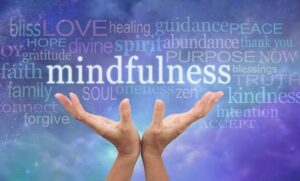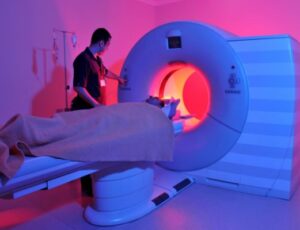Video: Self-hypnosis reduces narcotic use
 I see many smokers who are struggling to quit. Initially we talk about their smoking history, past attempts to quit and any health concerns for themselves or if they know someone whose health was compromised by smoking.
I see many smokers who are struggling to quit. Initially we talk about their smoking history, past attempts to quit and any health concerns for themselves or if they know someone whose health was compromised by smoking.
Smokers are very quick to say they hate smoking; they hate the smell, the cost and don’t like the fact that they have to go ‘somewhere else’ to smoke.
A recent client said she was at a family function and a couple of cousins were also smokers. The routine was for them to step outside and chat while they smoked.
The client had already come for her first of two office visits and had been listening to MP3 of her session daily at home. While recounting this particular smoke break story, she said it was very different from previous times. ‘We were standing in the cold next to the chimney to the back side of the house. I remember feeling so stupid because I was freezing to death and isolated from the rest of my family just to smoke.’
remember feeling so stupid because I was freezing to death and isolated from the rest of my family just to smoke.’
She spoke at length about how, in the past week, she became much more aware of the absurdity and certainly the health risk of smoking. I reminded her how hypnotherapy enhances mindfulness, we become very careful thinkers and impulsivity fades. This was likely why she saw this situation in a new light.
I asked her why she ever smoked in the first place, what was the upside? If she was so eager to condemn the cost, stink and health risk what could she possibly be getting from smoking.
She said ‘I guess I just want to smoke.’ To that I asked her to drill down into the ‘want’ a little more. Could she logically want something that checked off the cost, stink and health boxes? She paused and then responded with an emphatic ‘of course not’.
 I asked if it made sense that the ‘want’ was just a habit that had taken on a life of its own out of simple repetition? That made sense to her.
I asked if it made sense that the ‘want’ was just a habit that had taken on a life of its own out of simple repetition? That made sense to her.
Then I asked if it also made sense that by continuing to repeat the relaxing process that reinforced a comfortable smoke-free transition could fix the problem? She just smiled and nodded. After our chat we did her hypnotherapy session and she left the office feeling very focused and confident.
I routinely engage in these types of conversations with clients prior to initiating a hypnotherapy session because it helps them sort through all the details on a subconscious level. Once the session is concluded clients typically are much more focused and confident about moving forward to healthy change.
By: Paul Gustafson
Client Welfare: Members shall make the physical and mental well-being of each client a prime consideration.
Client Safety: Members shall not engage in verbal, physical or sexual abuse of any client.
Practice Limits: Members shall use hypnotism strictly within the limits of their training and competence and in conformity to the laws of their state.
Advertising: Members shall be truthful in their advertising.
Referred Practice: Members shall engage in hypnotic work with a client regarding a medical or mental disease only on written referral from an appropriately licensed medical or mental health professional, except when otherwise provided for by state law.
Reasonable Practice: Members shall withhold non-referred hypnotic services if a client’s behavior, appearance or statements would lead a reasonable person to believe that the client should be evaluated by a licensed health care professional. Members shall provide services to such clients only after evaluation and with the approval of the licensed health care professional.
Colleagues: Members shall treat hypnotist colleagues without public defamation.
Record Keeping: Members shall establish and maintain proper records necessary to a professional practice.
Scope of Practice: Members shall use hypnotism with clients to motivate them to eliminate negative or unwanted habits, facilitate the learning process, improve memory and concentration, develop self-confidence, eliminate stage fright, improve athletic abilities, and for other social, educational and cultural endeavors of a non-medical nature. Except where state law provides otherwise, members shall use hypnotism with clients regarding a medical or mental disease only on written referral from a licensed medical or mental health professional.
Titles of Practice: Members shall hold their hypnotism services out to the public using only those titles earned and approved by the National Guild of Hypnotists: Certified Hypnotist or Certified Hypnotherapist Certified Instructor, Board Certified Hypnotist or Board Certified Hypnotherapist, Fellow of the National Guild of Hypnotists, or Diplomate of the National Guild of Hypnotists, or titles protected by state law.
Disclosure: Members shall truthfully disclose in writing to each client, using a Client Bill of Rights or similar written document, the nature and venue of the member’s hypnotism training, the field of study of any higher degree used when holding services out to the public, the lawful limits of the member’s practice of hypnotism, the practitioner’s theoretical orientation or model, instructions for contacting the National Guild of Hypnotists should the client seek redress, and any business policies and practices maintained by the practitioner. Members holding advanced degrees from institutions that do not hold accreditation recognized by the United States Department of Education shall disclose to clients that the degree is alternative rather than academic. Members shall restrict the services described on this document to hypnotism.
Terminology: Unless qualified to do so by another credential, members shall avoid using the language of psychopathology or medicine when working with clients, except on referral from a licensed medical or mental health professional.
Public Hypnotism: Demonstrational hypnotism shall always be presented in a tasteful manner which is considerate of the individuals who have volunteered to participate in a public demonstration. Individuals participating in such demonstrations shall be treated with courtesy and respect.
Age-regression and Forensic Hypnotism: Age-regression and forensic hypnotism shall be used only by those who have had additional training in these specific fields of study.
Imagery: Frightening, shocking, obscene, inappropriately sexually suggestive, degrading or humiliating imagery shall never be used with a hypnotized client.
Claims: Members shall not disseminate false or exaggerated claims regarding hypnotism, but shall attempt whenever possible to inform and educate the public with a true perspective of hypnotism. Members shall make only those specific claims for the effectiveness of hypnotism as can be justified by outcomes data. Members shall publicly maintain a professional demeanor toward other professions expressing divergent views on hypnotism.
Advertising: All advertising shall be factually presented in a professional and ethical way consistent with accepted standards. Members shall advertise services and capabilities as hypnotists in conjunction with other specialties, occupations, vocations, arts or professions only if duly trained, properly qualified and professionally recognized in those fields.
Education: Schools of instruction now existing and those to be established in the future shall provide a full curriculum consisting of the theory, practice and applications of hypnotism, instruction and supervised practice in hypnotic methodology, the possibilities and limitations of hypnotism, with thorough instruction on the Ethics and Standards of our profession as set forth herein. All curricula used at schools recognized by the National Guild of Hypnotists shall be approved by the National Guild of Hypnotists. Instructors at such schools are expected to be approved and certified by the National Guild of Hypnotists or to hold credentials judged by the Guild as equivalent.
Good Standing: Members who maintain the required number of continuing-education hours, are of high moral character, conduct themselves and their practice of hypnotism in a professional and ethical manner and meet their financial dues obligation shall be considered as members in good standing of the National Guild of Hypnotists.
Recommendations: When a member recommends a client consult a colleague or health care professional, the member shall, whenever possible, provide the client with a list of more than one recommended

 A new study published Nov. 4, 2019, in the journal JAMA Internal Medicine details the first comprehensive look across the scientific literature at the role of mind-body therapies in addressing opioid-treated pain.
A new study published Nov. 4, 2019, in the journal JAMA Internal Medicine details the first comprehensive look across the scientific literature at the role of mind-body therapies in addressing opioid-treated pain.
The researchers found that certain mind-body therapies can reduce pain, as well as reduce opioid use, among patients treated with prescription opioids.
These findings are critical for medical and behavioral health professionals as they work with patients to determine the best and most effective treatments for pain.”
Eric Garland, lead author on the study explained that mind-body therapies focus on changing behavior and the function of the brain with the goal of improving quality of life and health.
Mind-body therapies include clinical use of meditation/mindfulness, hypnosis, relaxation, guided imagery, therapeutic suggestion and cognitive-behavioral therapy.
The researchers examined over 4,200 articles to identify 60 previously published randomized controlled trials on psychologically oriented mind-body therapies for opioid-treated pain.
The randomized controlled trials included in the study involved more than 6,400 study participants.
The research team looked at the type of pain experienced by the study participants, the type of mind-body therapy used and its effect on the severity of pain and the use or misuse of opioids.
They found that meditation/mindfulness, hypnosis, therapeutic suggestion and cognitive-behavioral therapy all demonstrated significant improvements in pain severity.
They also found that the majority of the meditation/mindfulness, therapeutic suggestion and cognitive-behavioral therapy studies showed improvements in opioid use or misuse. In contrast, two studies utilizing relaxation found significantly worsened results in opioid dosing.
Notably, mind-body therapies seem to be effective at reducing acute pain from medical procedures, as well as chronic pain.
The researchers highlighted this as an important finding, as mind-body therapies could be easily integrated into standard medical practice and could potentially prevent chronic use of opioids and opioid use disorder.
 Since mind-body therapies primarily use mental techniques and can continue to be utilized by patients after formal treatment, they may be more easily-accessible than other treatments.
Since mind-body therapies primarily use mental techniques and can continue to be utilized by patients after formal treatment, they may be more easily-accessible than other treatments.
The researchers also concluded that two of the mind-body therapies examined, meditation/mindfulness and cognitive-behavioral therapy, might have the highest clinical impact, since they are so widely accessible and affordable.
“A study published earlier this year projected that by 2025, some 82,000 Americans will die each year from opioid overdose,” said Garland.
“Our research suggests that mind-body therapies might help alleviate this crisis by reducing the amount of opioids to cope with pain. If doctors, nurses, social workers, policymakers, insurance companies and patients use this evidence as we make decisions, we can help stem the tide of the opioid epidemic.”
Reviewed by: Kate Anderton

 When I’m stressed, I listen to a 20-minute mindfulness meditation tape. It always helps me feel calmer and more relaxed. Many meditative practices can do this.
When I’m stressed, I listen to a 20-minute mindfulness meditation tape. It always helps me feel calmer and more relaxed. Many meditative practices can do this.
Mindfulness meditation is getting a lot of attention because it seems to help with so many physical and psychological problems—like high blood pressure, chronic pain, psoriasis, sleep trouble, anxiety, and depression.
It’s also been shown to boost immune function and stop binge eating. No one knows for sure what’s behind these benefits, but physical changes in the brain probably play a role.
Mindfulness meditation is a mental discipline. You start by focusing your attention on your breath, a sensation in the body, or a chosen word or phrase.
You note the thoughts, emotions, and background sounds that arise from moment to moment, observing them without analyzing them or making judgments about what’s going on around you.
If you drift into thoughts about the past or concerns about the future, you bring your attention back to the present, for example, by refocusing on your breathing. It takes practice.
A new study, published in the May 2011 issue of Neuroimage, suggests that one effect of all this focusing and refocusing is increased brain connectivity. Researchers at the University of California-Los Angeles compared the brain activity of volunteers who had finished eight weeks of mindfulness-based stress reduction training with that of volunteers who did not do such training.
Functional MRI scans showed stronger connections in several regions of the meditators’ brains—especially those associated with attention and auditory and visual processing.
Unfortunately, the study didn’t scan the volunteers’ brains before mindfulness training, so no one can say for sure that mindfulness training was responsible for the differences.
At Massachusetts General Hospital, researchers used MRI scans to document before and after changes in the brain’s gray matter—the “processing” neurons—associated with mindfulness meditation.
The density of gray matter increased in regions governing such distinctly different activities as memory, self-awareness, and compassion, and decreased in the amygdala—the part of the brain associated with fear and stress.
We covered this intriguing research in the April issue of Harvard Women’s Health Watch.
At the moment, scientists can only speculate about the relationship between these brain changes and the health benefits associated with mindfulness meditation.
But the research adds to growing evidence that meditative practices can alter the body at a fundamental level—even, it turns out, at the level of our genes.
 Meditation elicits the “relaxation response,” a state of deep relaxation first described more than 35 years ago by mind-body pioneer Dr. Herbert Benson, currently emeritus director of the Benson-Henry Institute of Mind-Body Medicine at Massachusetts General Hospital.
Meditation elicits the “relaxation response,” a state of deep relaxation first described more than 35 years ago by mind-body pioneer Dr. Herbert Benson, currently emeritus director of the Benson-Henry Institute of Mind-Body Medicine at Massachusetts General Hospital.
Since then, Benson and his colleagues at Massachusetts General Hospital and Beth Israel Deaconess Medical Center have discovered that relaxation techniques (including meditation and yoga) turn certain sets of genes on and off in people who practice them regularly.
Benson, who is the medical editor of Stress Management: Approaches for preventing and reducing stress says these genes are involved with controlling “how the body handles free radicals, inflammation processes, and cell death.”
By: Carolyn Schatz